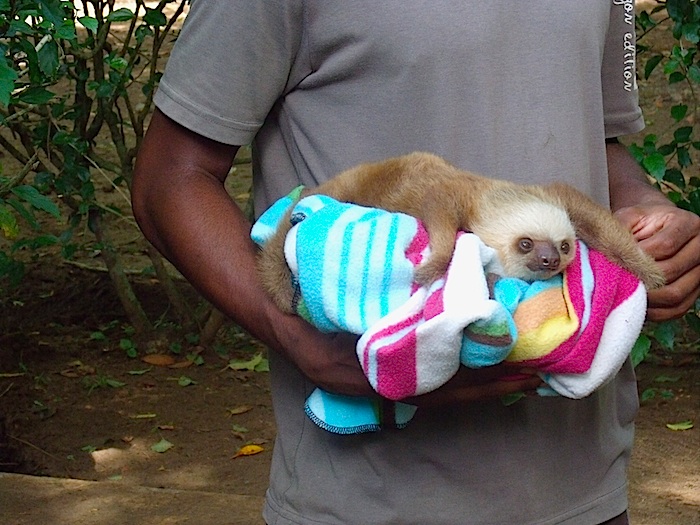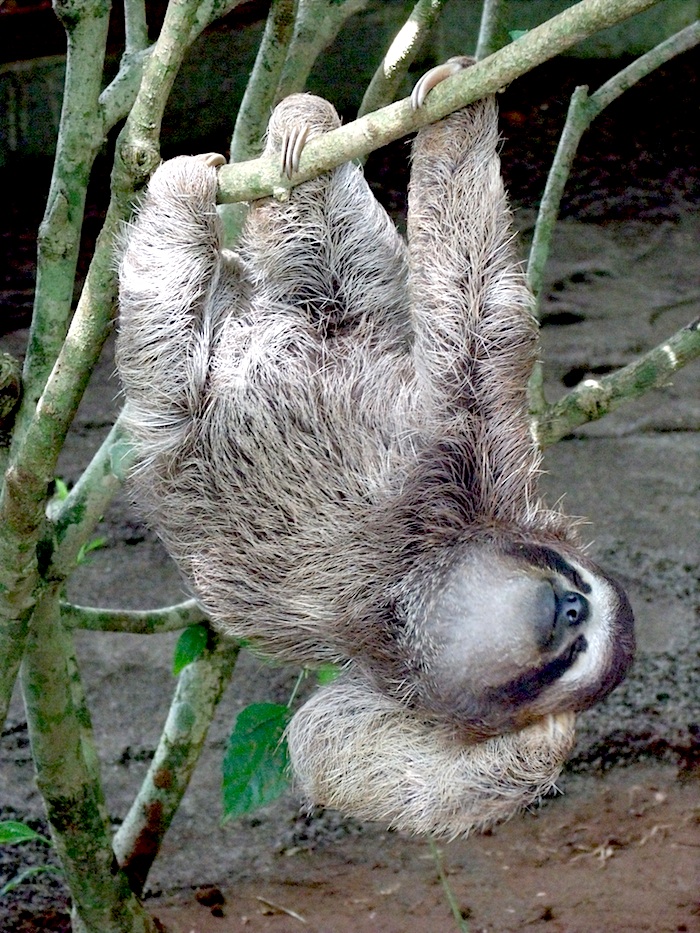
|
|
 |
||||||||||||||||||||
|
|
|||||||||||||||||||||
|
THE JAGUAR RESCUE CENTER A Must-See Sanctuary Deep in the Heart of Costa Rica By Katey Pfeil Photos by Frank Ramos Driving across the country of Costa Rica in one day probably sounds like a nightmare to most, but neither my boyfriend Frank nor I would consider ourselves “tourists” in the common sense of the word. It’s not that we didn’t spend plenty of hours soaking up the mellow pura vida lifestyle on our 10-day journey—it’s just that we had to get from the Pacific side of the country to the Caribbean side in one day so we could cram as much action into the tail-end of our trip as possible. My main motive for wanting to venture over to the Caribbean side (also known as the Atlantic side), was to visit The Jaguar Rescue Center (JRC), an animal sanctuary I’d read about located in the heart of the mysterious Afro-Caribbean wilds. But as we neared our guesthouse in the dusty town of Cahuita, we were almost certain our last leg was going to be a bust. I was starting to doubt that  the adorable baby sloths housed at the sanctuary were worth risking our safety for, because for the first time on this trip I felt very far from home and a little out of my comfort zone. the adorable baby sloths housed at the sanctuary were worth risking our safety for, because for the first time on this trip I felt very far from home and a little out of my comfort zone. Borderline-delirious after having been in the car for over eight hours in the pouring rain, the outskirts of Cahuita were looking pretty darn eerie in the fading sunlight. We had imagined ourselves stopping off at quaint roadside soda stands in order to witness as much local flavor as possible, but as I caught a side glimpse of Frank’s serious demeanor that plan seemed a distant memory. Our trusty rental bravely hugged the narrow road that crept past pastel-colored shanties, swamplands and banana groves. Possibly to help fortify our resolve, we decided to stop at a roadside liquor store before checking in to our overnight accommodations. As we entered the store, I couldn’t help but notice the garlic cloves hanging above the door. That little herb explained it all: we were definitely in voodoo territory. After a sound night’s sleep with no extraterrestrial visitations, our spirits were revived and the tropical surroundings seemed to remind us a little less of the movie The Beach, and a little more like TV’s Fantasy Island. First thing on the agenda was visiting the JRC, and I was not about to let my mood from the night before detract from anything I would experience that day. The JRC is located in Puerto Viejo, about a 15 minute car ride from Cahuita. Although the towns in the region do tend to run together, Puerto Viejo is decidedly more “touristy,” with quaint cafes, yoga studios and vendors dotting the main road. A fun energy permeates Puerto Viejo, and many seeking an expat lifestyle come to call this place home. The center is a five minute drive out of town, and the road runs right alongside the famed beach break of Punta Uva. Plenty of visitors opt for walking to the center, which only takes about 30 minutes from central Puerto Viejo. Another option is to rent a bicycle at one of the many kiosks. Built in 2008, the JRC is a private, not-for-profit facility on 5,000 acres of land. Although you will only see one jungle cat at the center, there are many other animals to see. The center is named after the first animal brought to the sanctuary—a baby jaguar. Unfortunately, the cat was in poor health and did not live very long; but his influence is still reflected in the name of the sanctuary. The JRC is owned by a couple who share a passion for animal conservation: Encar is the founder, and has a degree in Biology from the University of Barcelona, where she studied primates. Sandro is the facility’s primary herpetologist, which makes him an expert in the branch of zoology dealing with amphibians and reptiles. The center’s mission is to rehabilitate sick, confiscated or injured animals that are  found or brought to the center and to return them to the wild when they are healthy and/or old enough. Many of the animals are taken deep into the jungle on the center’s grounds on a daily basis to be in their natural surroundings. Oftentimes on these outings, the animal chooses to venture off into the jungle to return to the wild—a reaffirming moment for the keepers. found or brought to the center and to return them to the wild when they are healthy and/or old enough. Many of the animals are taken deep into the jungle on the center’s grounds on a daily basis to be in their natural surroundings. Oftentimes on these outings, the animal chooses to venture off into the jungle to return to the wild—a reaffirming moment for the keepers.The tour at the JRC is only $14 and is well worth every penny. Our tour guide was a local named Dexter who was very knowledgeable and thorough. He first took us by a dozen reptile tanks, explaining to us the in’s and out’s of Costa Rica’s snakes and lizards. Coral snakes, pythons and the most dangerous one of them all—the bushmaster pit viper, were there right before our eyes. After checking out the reptiles we moved on to see some less lethal creatures. The Red Eyed Tree Frog, for example, was quite amusing. Despite being nocturnal, and therefore very sleepy upon our visit, we were able to spot them expertly camouflaged underneath the leaf of a tropical fern. I was able to hold one, and as soon as he began trying to get some shut-eye, Dexter prompted me to give him a gentle poke, which allowed us to snap a picture just before he dozed off again. We joined a tour group of 15 English-speaking tourists, and took a short walk through the main grounds of the center as Dexter told us more about the sanctuary and why conservation is so important to the country. He explained that many of the locals do not understand the responsibility they have to protect indigenous creatures. For this reason, locals are allowed free access to the center at any time. “We hope they (locals) can come here and learn more about the animals. Snakes, for example, are not all dangerous. Many of the local farmers kill any snake they see, because they don’t know which ones are poisonous and which ones are not. This is unfortunate, as many harmless snakes are killed for no reason. Each species serves a purpose in its own way,” explained Dexter to the group - which was small enough to flow easily around the grounds, and quiet enough not to disturb the animals. Still, I’d yet to do what I’d come for: to spend time with the sloths.  Although we weren’t able to touch the sloths, we were able to watch the center’s volunteers hold them on the lawn. Several of the adult sloths climbed freely in the hibiscus bushes just a few inches away from us—some with bleach-blonde locks and sooty hands, others with charcoal coats and pink toes. The handlers explained that sloths are the Costa Rican equivalent to squirrels in the U.S. but their numbers are declining as many are killed by vehicles when trying to cross the street. Another reason for their recent decline is loss of natural habitat. Although we weren’t able to touch the sloths, we were able to watch the center’s volunteers hold them on the lawn. Several of the adult sloths climbed freely in the hibiscus bushes just a few inches away from us—some with bleach-blonde locks and sooty hands, others with charcoal coats and pink toes. The handlers explained that sloths are the Costa Rican equivalent to squirrels in the U.S. but their numbers are declining as many are killed by vehicles when trying to cross the street. Another reason for their recent decline is loss of natural habitat.We left the sloths and we were guided over to the Howler monkeys. Although we couldn’t take pictures of the monkeys from inside the enclosure, we were able to hold them and let them climb all over us as much as we wanted to - which for Frank and me was about 15 minutes. The best part of the day was having a monkey handed to me by Dexter. Content in my arms, he fell asleep for several minutes. With his soft hair against my arm and with his little rubbery fingers grasping my thumb, it was impossible not to feel a sense of quiet peace. As the tour winded down, I felt that our visit to the JRC had exceeded my expectations. I realized that I was glad we’d made our insane dash across country to visit it and get a taste for a region of Costa Rica that’s entirely different from the touristy hubs on the Pacific side. Whatever weird vibe I had when we first approached Cahuita had disappeared and I was ready to take in the last bits of our tropical vacation. As is often the case, the best truly had been saved for last. FAST FACTS Visit www.jaguarrescue.com or call 00506 2750 0710 for more information. Tours are Monday-Saturday, at 9:30 and 11:30. You can also learn about the center’s animal adoption program by visiting the website. |
|
|
|
|
| Site Map |